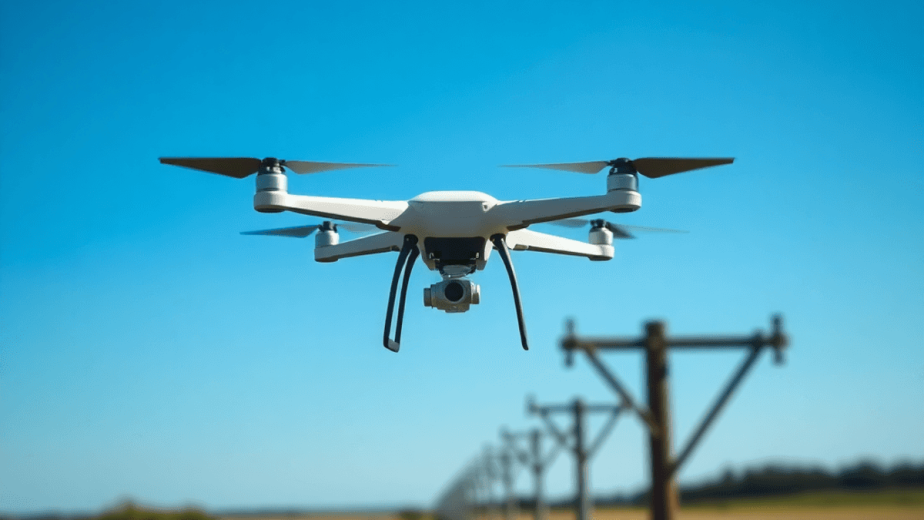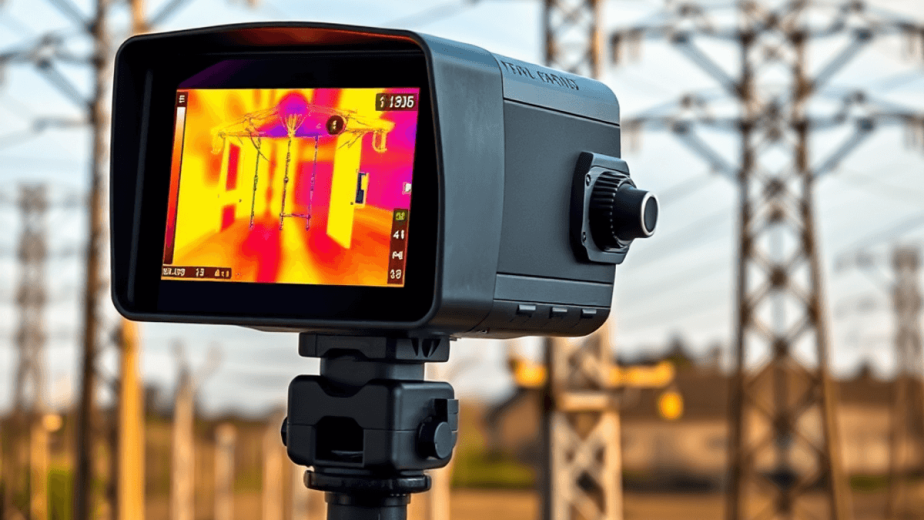Introduction
Inspecting commercial roofs is essential for maintaining the integrity and safety of buildings. Regular inspections help identify potential issues before they escalate into costly repairs. The consequences of neglecting roof maintenance can lead to structural damage, leaks, and even jeopardize occupant safety.
Mira Spatial is a technology company that is leading the way in transforming infrastructure management with innovative solutions. They use drone technology, satellites, and artificial intelligence to improve monitoring and analysis of infrastructure. Their goal is to change the way commercial roofs are inspected by using advanced tools that provide valuable information about the condition of roofs.
The top benefits of inspecting commercial roofs with drones include:
- Improved safety by reducing physical access requirements
- Increased efficiency in inspection processes
- Enhanced data collection for predictive maintenance strategies
By combining traditional methods with cutting-edge technology, Mira Spatial is changing the field of commercial roof inspections. This allows businesses to operate more smoothly while also ensuring their buildings are performing at their best through regular evaluations.
1. Safety Benefits of Drone Inspections
Inspecting commercial roofs presents inherent risks, but drones significantly enhance safety protocols. Key benefits include:
-
Elimination of Physical Access: Drones can conduct inspections without the need for technicians to physically access rooftops, minimizing exposure to dangerous heights and unstable surfaces.
-
Reduction in Accidents and Injuries: Traditional inspection methods often involve climbing ladders or scaffolding, increasing the likelihood of accidents. Utilizing drones greatly reduces these risks, safeguarding workers.
-
Enhanced Safety Protocols: Drones improve safety management by enabling real-time monitoring and data collection from a distance. The ability to gather high-resolution images and videos ensures comprehensive assessments without compromising worker safety.
By implementing drone technology for roof inspections, businesses can prioritize safety while maintaining operational efficiency. Enhanced risk reduction measures not only protect employees but also foster a culture of safety within the organization.
2. Efficiency in Roof Inspections
The efficiency of drone inspections significantly enhances the roof assessment process. Compared to traditional manual inspections, drones provide:
- Speed of Coverage: Drones can quickly survey extensive roof areas in a fraction of the time it takes for personnel to conduct a thorough inspection. This rapid assessment allows for immediate identification of problem areas and facilitates timely decision-making.
- Streamlined Processes: Utilizing drones streamlines the entire inspection workflow. With real-time data capture and immediate access to high-resolution images, teams can analyze the condition of roofs without waiting for lengthy reports or feedback loops. This efficiency minimizes operational downtime, ensuring that businesses can maintain productivity while addressing any critical roofing issues.
Using drone technology leads to noticeable improvements in inspection turnaround times. The ability to manage multiple inspections simultaneously means that scheduling conflicts and resource constraints become less significant. As you adopt these advanced solutions, you position your business to respond swiftly to maintenance needs, ultimately protecting your investment and enhancing the longevity of your commercial roofs.
3. Cost-Effectiveness of Drone Technology
Using drones for commercial roof inspections offers significant cost savings that impact overall operational costs. Key advantages include:
- Elimination of Heavy Equipment Costs: Traditional roof inspections often require expensive scaffolding, ladders, and safety gear. Drones remove the need for this heavy equipment, leading to substantial cost reductions.
- Labor Savings: Inspections conducted by drones are notably faster than manual methods. This efficiency allows for quicker turnaround times and reduces labor hours, translating into direct cost savings.
The ability to allocate resources more effectively becomes a reality when you integrate drone technology into your inspection processes. Businesses can invest in other critical areas while benefiting from reduced inspection costs. The top benefits of inspecting commercial roofs with drones extend beyond safety and efficiency, making it a financially smart decision for companies looking to enhance their infrastructure management. In fact, when comparing the overall costs and benefits, it’s clear that drone technology is far more cost-effective than traditional inspection methods.
4. Advanced Thermal Imaging Capabilities
Drones equipped with thermal sensors offer advanced capabilities for inspecting commercial roofs. These specialized drones capture infrared images, allowing you to identify temperature variations across the roof surface. This technology plays a crucial role in leak detection and assessing insulation failure.
Key Features of Thermal Imaging with Drones
- Identifying Anomalies: Drones can detect issues that are invisible to the naked eye, such as moisture intrusion or areas of inadequate insulation. Early detection can prevent significant damage and costly repairs.
- Speed and Coverage: Thermal sensors enable rapid assessment over large areas, providing a comprehensive overview of the roof’s condition without needing extensive manual inspections.
- Data Integration: The thermal data collected can be easily integrated into your existing asset management systems, enhancing your maintenance strategies.
Utilizing drone technology for thermal imaging not only improves accuracy but also enhances safety by reducing the need for personnel to physically access potentially hazardous areas. This innovative approach aligns perfectly with Mira Spatial’s commitment to revolutionizing infrastructure management through cutting-edge solutions.
5. Non-Invasive Inspection Methodologies
The use of non-invasive inspections allows for frequent assessments of commercial roofs with minimal disruption to building operations. Drones can quickly survey large areas without the need for scaffolding or ladders, reducing the likelihood of interfering with daily activities.
Advantages of Non-Invasive Inspections
- Minimal Disruption: Inspections can be conducted during business hours, ensuring that operations continue smoothly.
- Frequent Assessments: Regular monitoring becomes feasible, providing ongoing insights into roof conditions.
Comparison with Traditional Methods
Invasive inspection methods often require significant preparation and downtime. These approaches can lead to:
- Extended Service Interruptions: Businesses may face delays due to setup and safety checks.
- Higher Risks: Increased potential for accidents when personnel are on rooftops.
Embracing drone technology enables a proactive approach to roof management, enhancing safety and efficiency while minimizing operational impact.
6. Detailed Data Collection and Analysis
Drones have transformed the landscape of roof inspections by enabling high-resolution imaging and comprehensive data collection. The types of data collected during inspections include:
- Visual imagery: High-definition photos and videos of the roof’s surface
- Thermal imaging: Identifying heat anomalies that indicate insulation issues or moisture intrusion
- 3D modeling: Creating accurate representations of roof structures for better analysis
- Geospatial data: Mapping the roof’s dimensions and features for precise assessments
Utilizing this rich dataset allows businesses to implement predictive maintenance strategies effectively. By analyzing trends in the data, you can:
- Anticipate potential failures before they occur
- Schedule maintenance proactively, reducing unexpected repair costs
- Extend the lifespan of roofing materials through timely interventions
The ability to harness data analytics not only enhances decision-making but also provides actionable insights that support long-term asset management. Drones facilitate a thorough understanding of roof conditions, which significantly contributes to the top benefits of inspecting commercial roofs with drones. Enhanced data collection leads to smarter, more informed strategies for maintaining and managing commercial roofing systems.
7. Comprehensive Documentation and Reporting
Drones significantly enhance the documentation and reporting capabilities during commercial roof inspections through high-quality visual evidence. This technology captures detailed images and videos, providing stakeholders with clear insights into the condition of the roof.
Key aspects include:
- Visual Evidence: Drones produce comprehensive imagery that highlights potential issues, ensuring transparency in communication with stakeholders.
- Real-Time Data Sharing: Immediate access to data facilitates swift decision-making, allowing for timely interventions when necessary.
To streamline this process, tools like Mira’s Asset Intelligence Platform play a crucial role. This platform integrates data collected by drones, enabling:
- Interactive Dashboards: Users can view and analyze inspection data easily.
- Automated Reporting: Reports generated from the platform are not only consistent but also accurate, enhancing stakeholder communication.
Embracing drone technology transforms how documentation is approached, making it more efficient and effective.
8. Accessing Hard-to-Reach Areas Efficiently
Drones are great at getting to places that traditional inspection methods can’t reach. They’re small and flexible, which makes them perfect for checking out tricky parts of roofs like:
- Steep slopes
- Tight spaces
- Complex architectural features
Using drones for these inspections means we can thoroughly check every inch of the roof, reducing the chances of missing something important that could lead to expensive repairs or safety problems.
Benefits of Using Drones for Inspections
Here are some key benefits of using drones for inspecting hard-to-reach areas:
- Thorough evaluations: Drones ensure that all roof surfaces are carefully examined, minimizing the risk of overlooking potential issues.
- Enhanced risk assessment: By gathering data from difficult locations, businesses can identify problems early on and take proactive measures to address them.
- Long-term asset management: Timely interventions made possible by drone inspections can help extend the lifespan of roofing systems.
Drones have a clear advantage in this regard, as they allow us to effectively and efficiently monitor every aspect of a commercial roof.
Conclusion
The world of commercial roof inspections is changing quickly. New drone technologies are set to improve accuracy, speed, and safety.
Businesses can gain a lot from using drone solutions. Better safety measures, cost savings, and quicker data gathering make the roof management process smoother.
Mira Spatial is leading the way, changing how inspections are done with cutting-edge technology.
Get in touch with us to learn more about our drone inspection services. Find out the key advantages of using drones for commercial roof inspections and enhance your infrastructure management plans.



